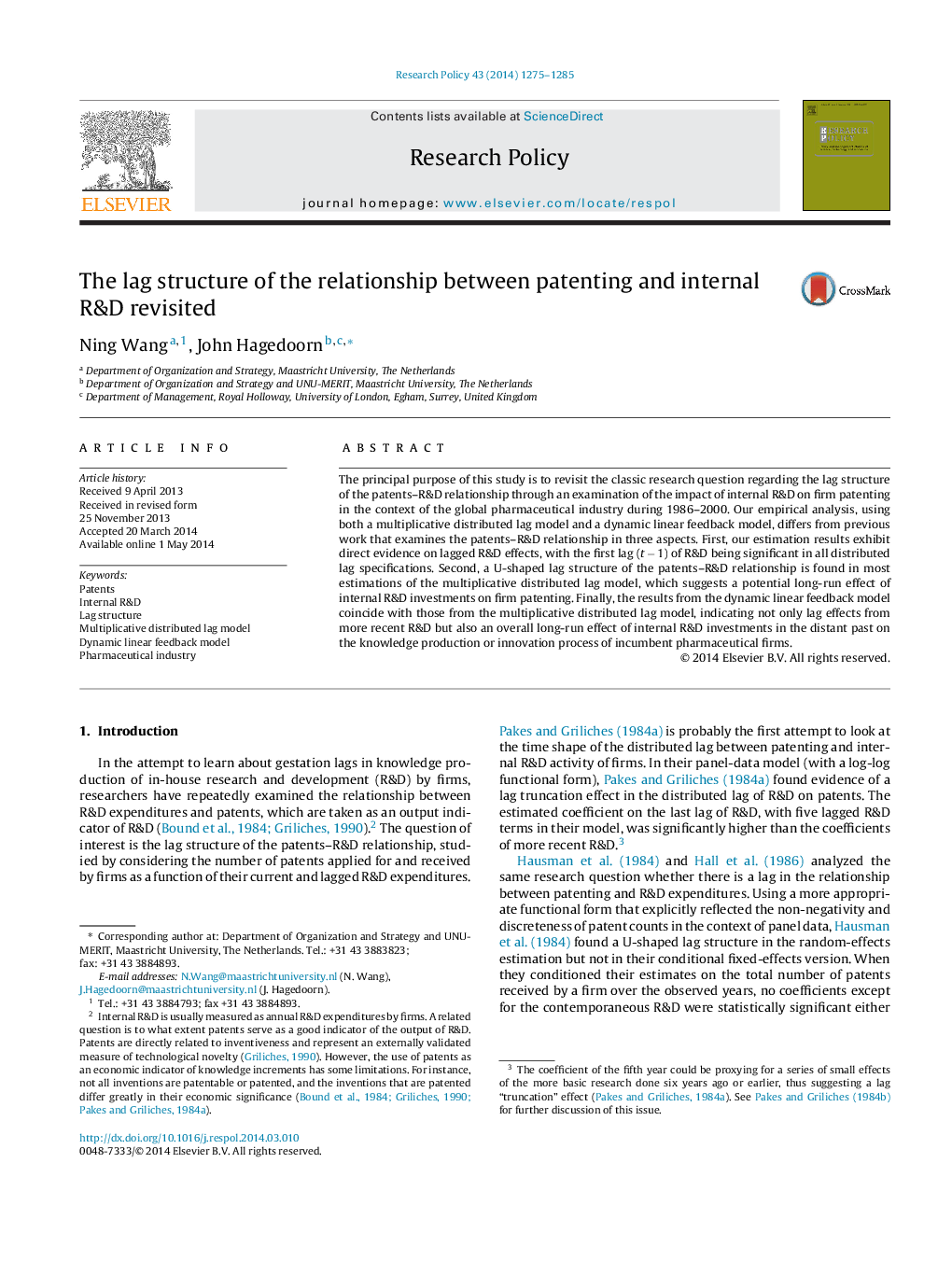| Article ID | Journal | Published Year | Pages | File Type |
|---|---|---|---|---|
| 984545 | Research Policy | 2014 | 11 Pages |
•Our results illustrate a cumulative, path-dependent innovation process of incumbent pharmaceutical firms.•In that context, current patent production is historically dependent on past internal R&D investments.•In addition to emphasizing current internal R&D, firms should adopt a long-term perspective for their R&D investment strategies.•Through periodically reviewing and recombining old, useful but under-utilized knowledge, firms can enhance their R&D investment returns.
The principal purpose of this study is to revisit the classic research question regarding the lag structure of the patents–R&D relationship through an examination of the impact of internal R&D on firm patenting in the context of the global pharmaceutical industry during 1986–2000. Our empirical analysis, using both a multiplicative distributed lag model and a dynamic linear feedback model, differs from previous work that examines the patents–R&D relationship in three aspects. First, our estimation results exhibit direct evidence on lagged R&D effects, with the first lag (t − 1) of R&D being significant in all distributed lag specifications. Second, a U-shaped lag structure of the patents–R&D relationship is found in most estimations of the multiplicative distributed lag model, which suggests a potential long-run effect of internal R&D investments on firm patenting. Finally, the results from the dynamic linear feedback model coincide with those from the multiplicative distributed lag model, indicating not only lag effects from more recent R&D but also an overall long-run effect of internal R&D investments in the distant past on the knowledge production or innovation process of incumbent pharmaceutical firms.
